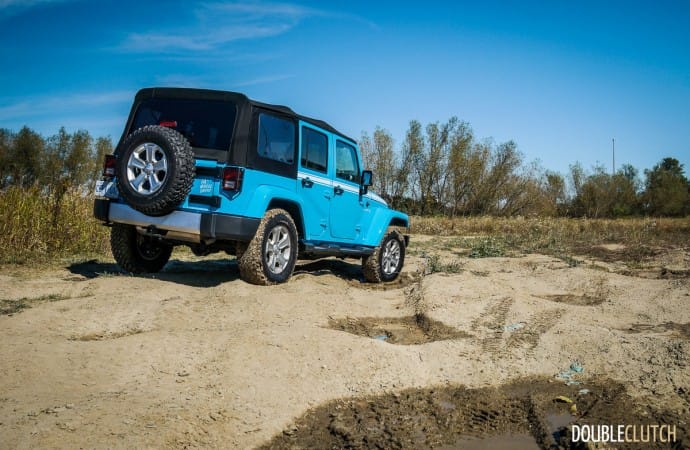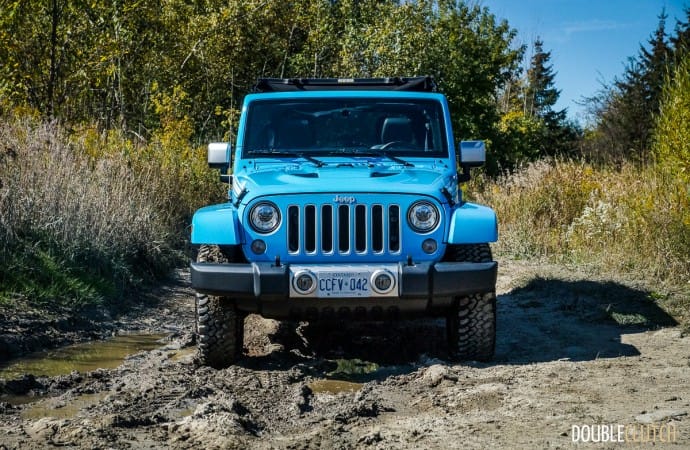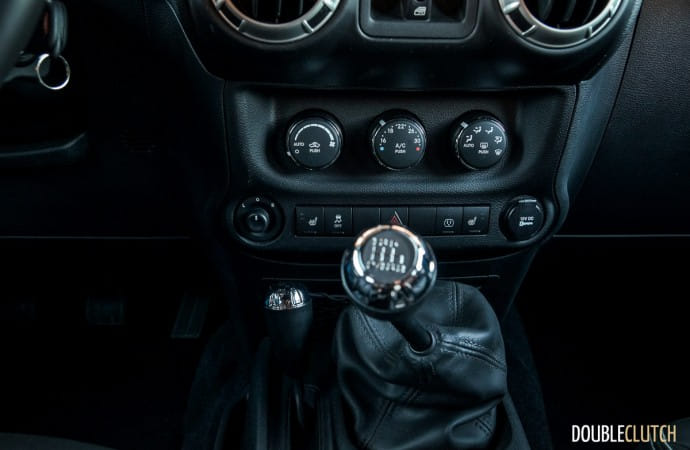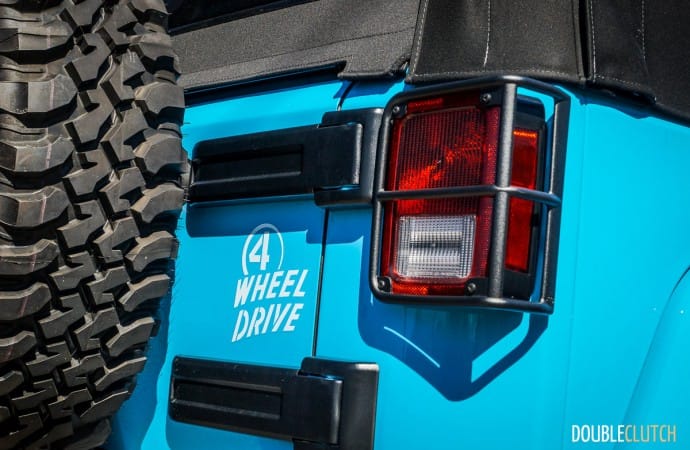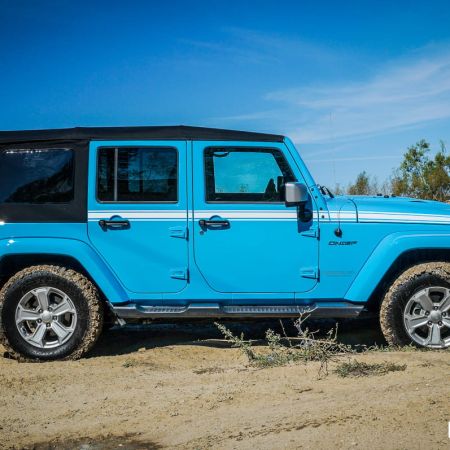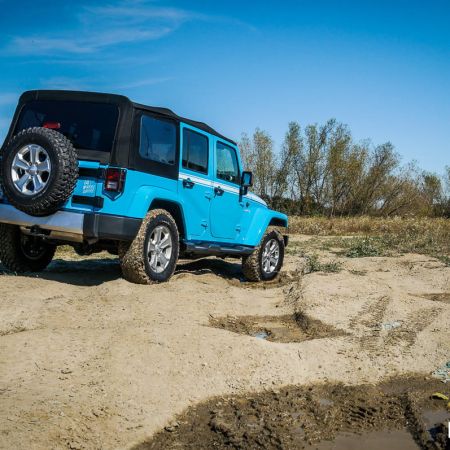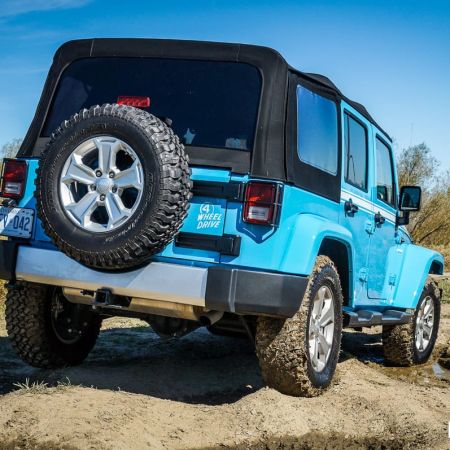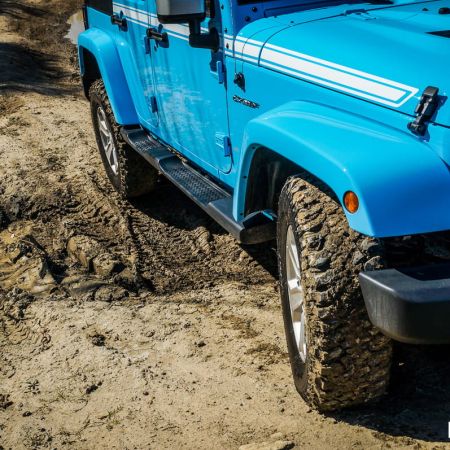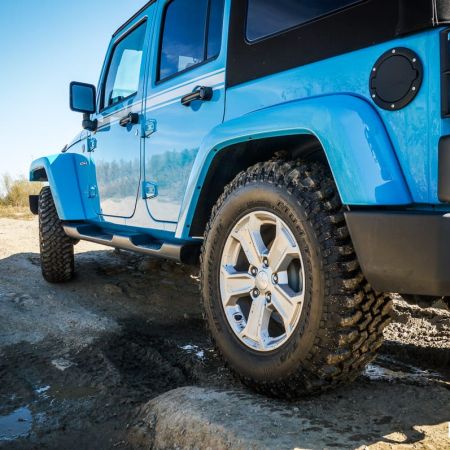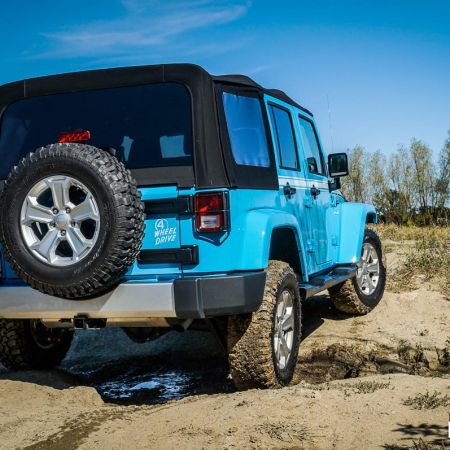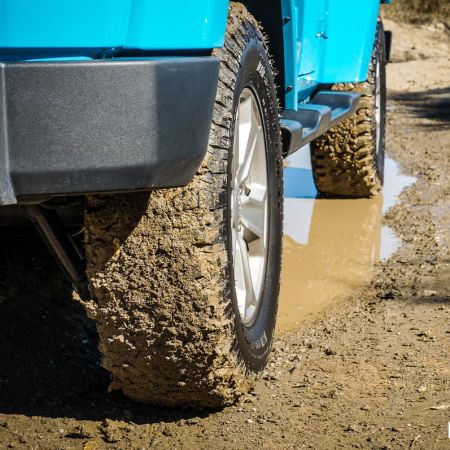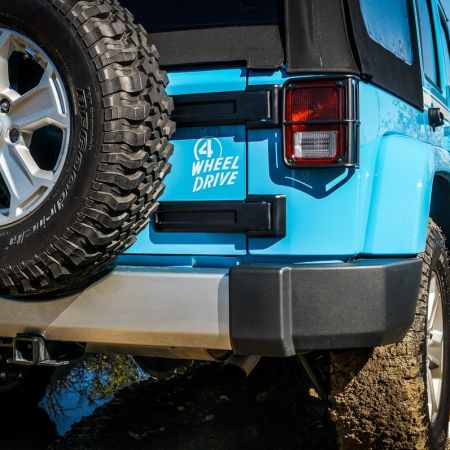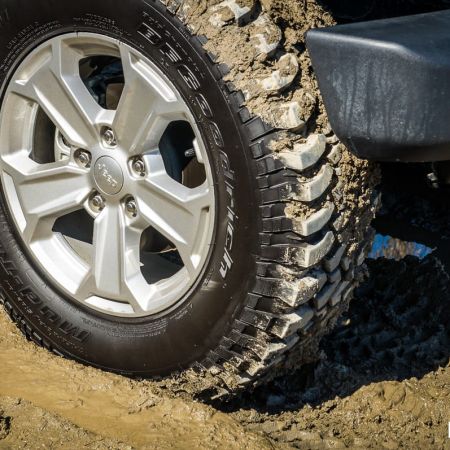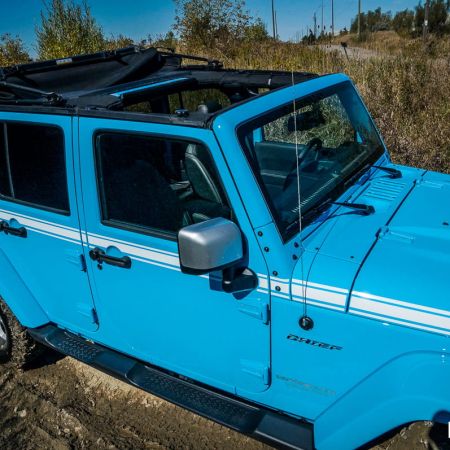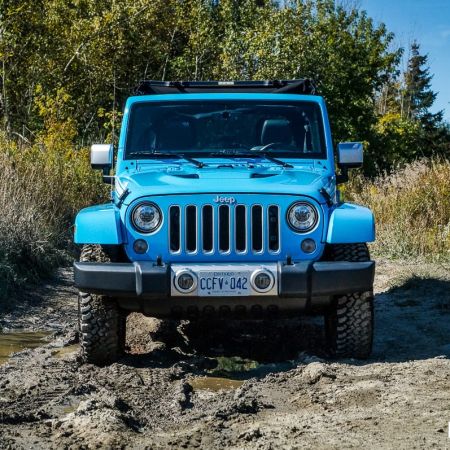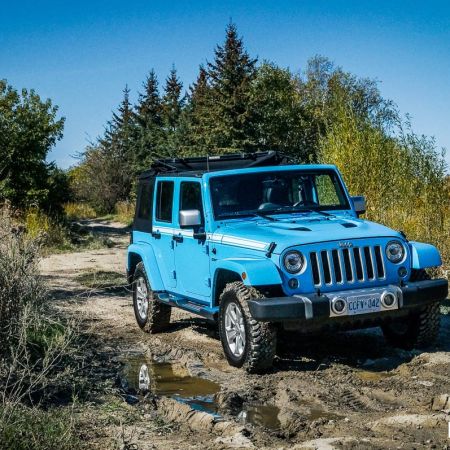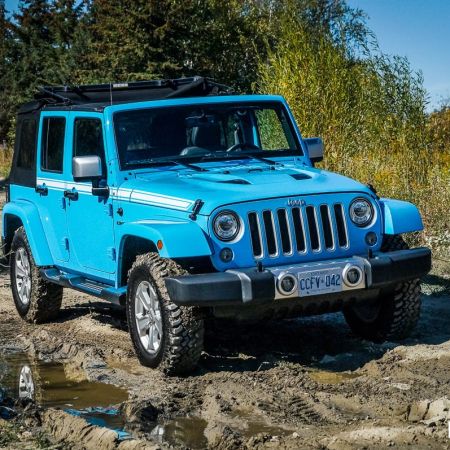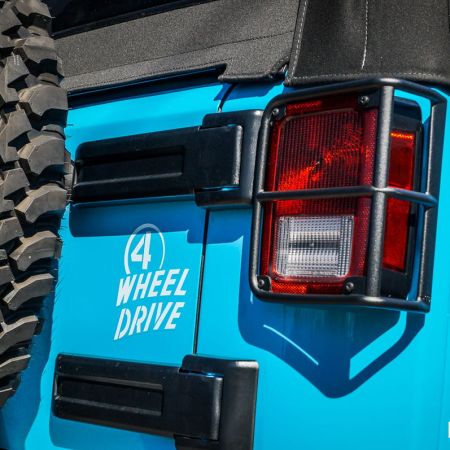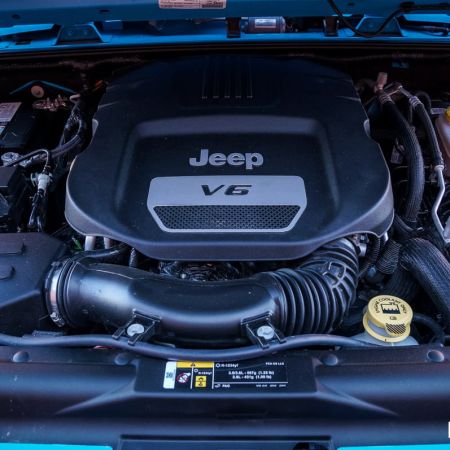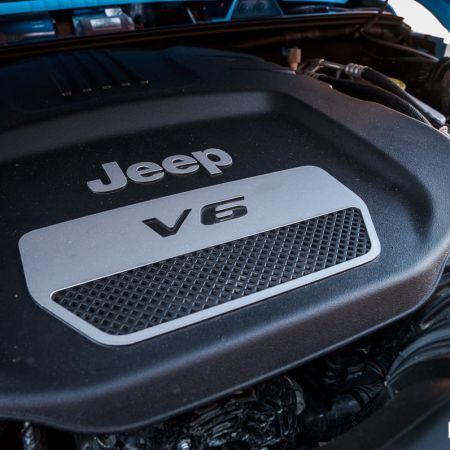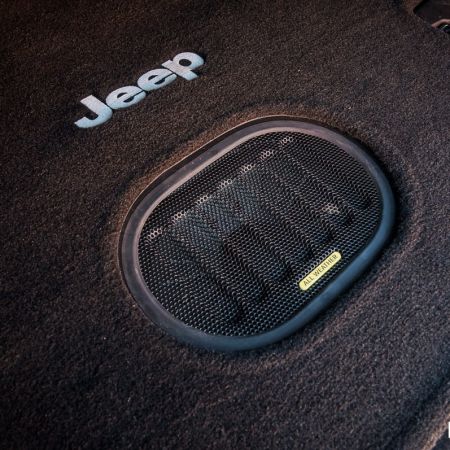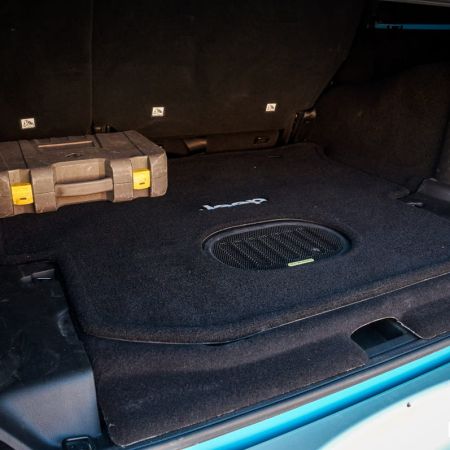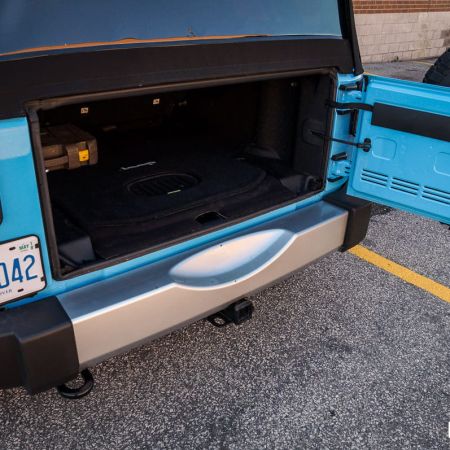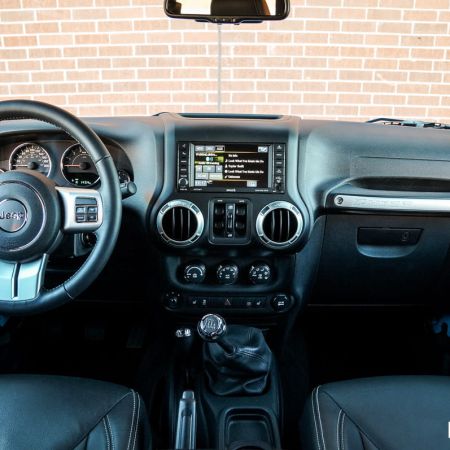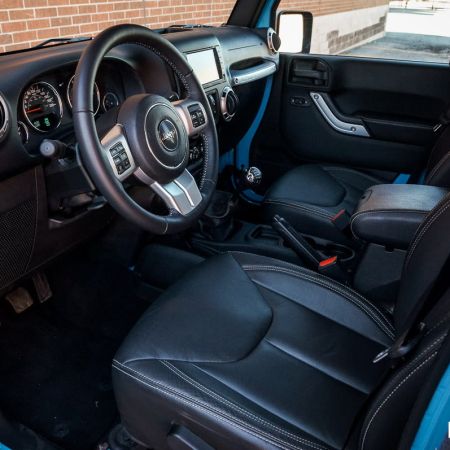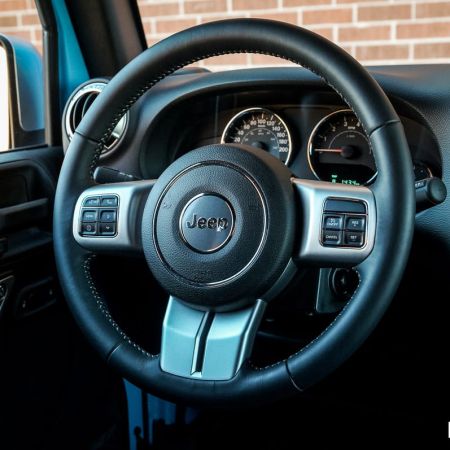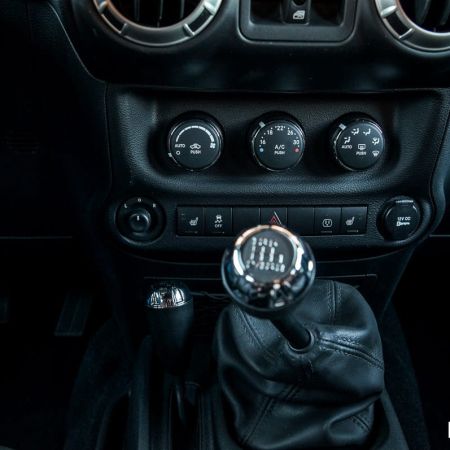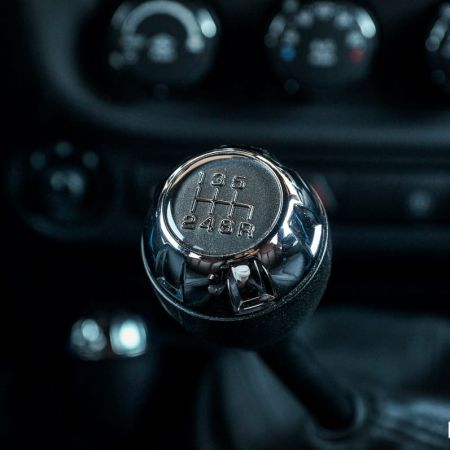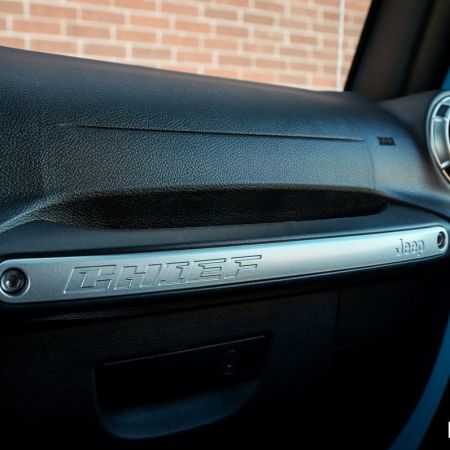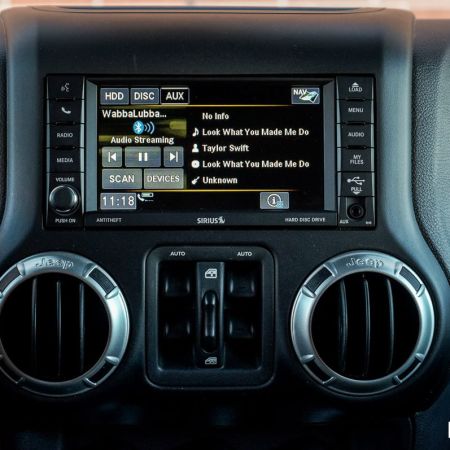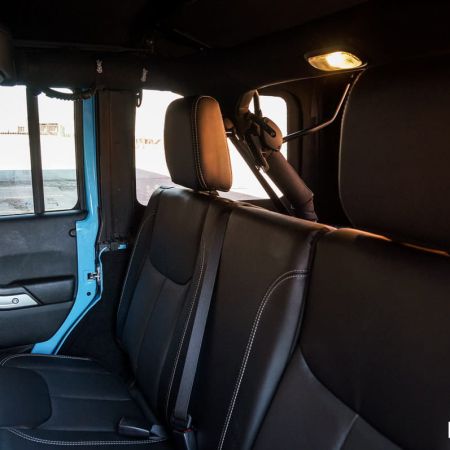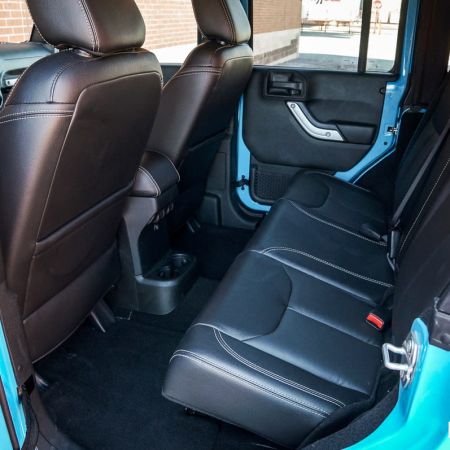Following a long line of “general purpose” military grade utility vehicles dating back to the 1940s, the 2017 Jeep Wrangler Unlimited Chief is the latest packaging and style treatment from the storied marque. While there are plenty of modern touches on today’s model, it still retains the simplicity and ruggedness that made the original Jeep such a smash hit. With a new model slated to debut any second now, the Chief’s bright blue paint job is aiming to keep things charming and fresh until a new Wrangler takes over.
Starting at the mid-level Sahara trim’s base price of $40,495, the Chief’s $4,500 Customer Preferred Package (23E) adds a white hard top, a white beltline stripe, a “Power Dome” vented hood, leather seats, BFGoodrich mud tires, and a nine-speaker Alpine stereo with all-weather subwoofer. $525 added Bluetooth connectivity, and LED headlights were another $495. A dual hard and soft top option (the test car was equipped with a soft top) was $1,420, and air conditioning with automatic climate control was another $225. Among other things, a $1,225 6.5-inch infotainment system with navigation brought the final as-tested price to $49,880. It’s quite a pretty penny for a simple hunk of metal that is the Wrangler, but the Chief does add some undeniable charm.
Underpinning all versions of the Jeep Wrangler are solid front and rear axle suspension designs. This old-school approach helps to maximize articulation when crawling over rough terrain, and also keeps things rudimentary, cheap, and beefy all at the same time. Unfortunately, it also means a very rough ride over uneven road surfaces, with harsh body movements and jolts exacerbated by the fact that the left and right wheels are not isolated from each other as they would be with an independent setup.
The 17-inch alloy wheels with LT255/75R17 BFGoodrich Mud Terrain T/A mud tires helped the Wrangler Unlimited Chief tackle a few basic rutted mud trails with ease, and the two-speed transfer case can be shifted on the fly when going from two-wheel drive to four-high. The Chief also doesn’t get the remote disconnecting sway bars and locking front and rear differentials that the off-road Rubicon trim gets. A limited-slip rear differential is a $525 standalone option and was not equipped on the test car. More than anything, the Chief appears to be equipped more for stylish road use and garnering more Jeep Waves from oncoming traffic.
On the road, in addition to the poor ride, the Wrangler Unlimited is loud at any speed, and a hard or soft top doesn’t appear to factor too much into attenuating road and wind noise. The hydraulically-assisted power steering is light but reasonably accurate, and brake pedal feel was surprisingly firm and confident. While the four-door Jeep can buck around like a bronco in rutted city roads, it does manage to settle down a bit on a smooth highway. Because of the large tires and old-world suspension, keeping speeds below 110 kilometres per hour tends to keep things more stable, especially in windy conditions. Those daring to venture above this speed will find the noise and wandering increasing substantially.
Powering all versions of two-door Wrangler and Wrangler Unlimited is parent company Fiat-Chrysler’s corporate 3.6-litre “Pentastar” V6. Rated for 285 horsepower and 260 lb-ft of peak torque, the six does move the Wrangler along with a reasonable amount of authority, but only when above 3,000RPM. There’s a distinct deficit of low end torque, which is a stark contrast to the Pentastar’s strong-like-bull momentum in the upper rev range. The test car was equipped with the base 3.21 rear axle ratio, which, especially when equipped with bigger mud tires, could be further helped along with the optional 3.73 ratio (Rubicon trims get 4.10).
All Wranglers are available with either a six-speed manual or five-speed automatic transmission, with the test car equipped with the shift-it-yourself setup. In both cases, gears are very spaced out and quite tall, requiring a series of downshifts in order to pass or climb hills. Clutch weighting is reasonably light, but feedback is nil, resulting in an increased chance of very soft stalls or near-stalls when launching from a stop. There’s also no place for drivers to rest their left foot, as there’s no dead pedal. The engine lets out a gruff exhaust note, but is almost too quiet at low revs, which can make drivers wonder if their Jeep is even running at all.
Shifter throws are very long, and shifter accuracy is reminiscent of a pickup truck from decades gone by. In particular, finding fifth gear was a bit of a challenge, as the shifter sometimes got stuck between the third and fifth gear gate. With the Jeep’s body-on-frame construction, the transmission and shifter linkage, being bolted to the frame, like to shake around and vibrate violently when hitting bumps and potholes. For some, it’s a source of unrefinement, but for others, it’s charm.
Nominal fuel economy ratings for the Wrangler Unlimited Chief are pegged at 15.0L/100KM in the city, and 11.4L/100KM on the highway. Observed economy over a week of testing netted 12.5L/100KM, even with a good chunk of highway driving. Much of this result could be attributed to the Chief’s BFGoodrich mud tires, which offer a fair bit of additional rolling resistance compared to the standard road tires that base Wranglers get. Fuel capacity is 85 litres, and regular octane fuel is acceptable.
Inside, the Chief carries on the same theme, with hard black plastics and plenty of exposed metal in a rudimentary setup that has only a few creature comforts. Automatic climate control and heated leather seats are about the only premium touches, and all Chiefs get a unique passenger grab handle just above the glovebox. From the driver’s seat, the single biggest improvement in recent years is the addition of the optional LED headlights – the regular halogens, whether low or high beam, are practically useless in dark or inclement weather.
Jeep’s 6.5-inch 430N infotainment head unit is of the touch variety, and is definitely showing its age in terms of interface and speed. Bluetooth pairing is cumbersome and done only by voice command, and is also slow to initialize on startup. The nine-speaker Alpine audio setup isn’t particularly clear, either, but does feature an all-weather subwoofer in the floor of the rear cargo area. There’s also a switchable 120-volt AC outlet for accessory use.
As an overall package, the 2017 Jeep Wrangler Unlimited Chief is a rugged vehicle that never lets you forget about the fact that it rides and drives like an old truck. It has poor enough noise, vibration, and harshness to annoy just about anybody, yet possesses an undeniable charm that has many people looking over and checking it out. It’s exactly the vehicle that’s become engrained in Jeep culture across North America, even though the Chief lacks some of the off-road hardware that would really make it shine on the trails. A new generation of Wrangler should be coming for 2018 – expect it to be better in every way, and hope for it to retain its personality, jaggedness and all. Despite with its fifty-large price tag, there’s a sizable subset of people that want these things, and Jeep will continue to sell many of them.

